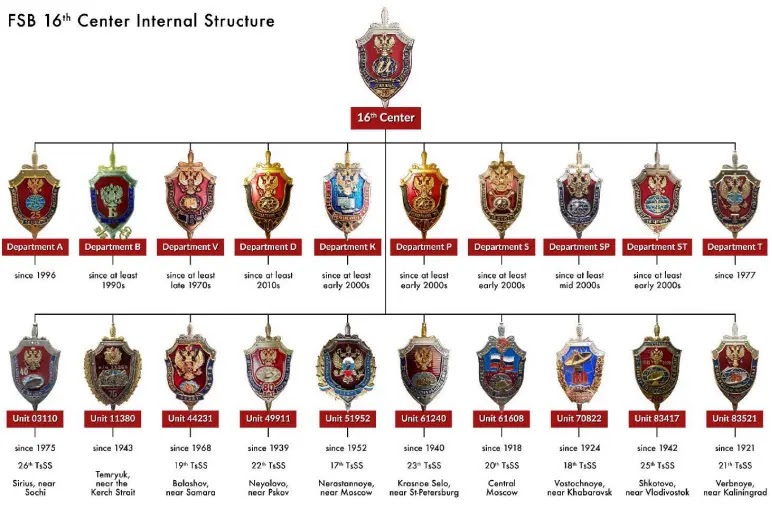A revolutionary study has unveiled the hidden workings of one of Russia’s most secretive intelligence endeavors, disclosing remarkable insights about the Federal Security Service’s (FSB) 16th Center and its vast signals intelligence network.
The analysis, undertaken by CheckFirst experts over a span exceeding a year, utilized an inventive approach that merged conventional open-source intelligence methods with “phaleristics”—the scholarly examination of military insignia and decorations.
The FSB’s 16th Center, functioning under the military label “Unit 71330,” embodies the contemporary version of Soviet-era SIGINT capabilities originating from KGB Order No. 0056, issued on June 21, 1973.
This enigmatic unit took over the primary signals intelligence responsibilities from the discontinued Federal Agency for Government Communications and Information (FAPSI) in 2003, transforming into what intelligence analysts characterize as Russia’s leading electronic surveillance organization.
The Center’s present agenda includes three vital areas: communications interception, cryptanalysis, and cyber operations targeting governmental bodies, NGOs, and private enterprises globally.
CheckFirst analysts discovered the unit’s intricate operational framework through meticulous examination of over 200 military insignia photographs gathered from Russian manufacturers’ websites, collector forums, and dedicated phaleristics communities.
The inquiry disclosed that the 16th Center consists of at least ten separate departments designated by letters including A, B, V, D, K, P, S, SP (Special Programs), ST, and T, employing no fewer than 560 personnel based on FSB organizational standards, where departments necessitate 55 workers and sections require a minimum of eight.
Technical Infrastructure and Surveillance Capabilities
The research highlighted a detailed network of ten ground-based SIGINT facilities strategically situated across Russia’s vast expanse, from the Estonian border to isolated areas near China.
These installations utilize advanced interception technology, including Circularly Disposed Dipole Arrays (CDAA), also known as Wullenweber systems, capable of 360-degree beamforming and signal tracking extending up to 15,000 kilometers.
.webp)
The facilities are equipped with Multibeam Tracking Antennas (MBTA) designed for concurrent satellite communications (SATCOM) interception and parabolic antennas ranging from six to 25 meters in diameter.
The investigators applied digiKam, an open-source photo management tool, to systematically catalog and analyze insignia containing geographic markers, unit identifiers, and symbolic representations of the Center’s technical proficiencies.
By cross-referencing this information with satellite imagery and declassified intelligence reports, they accurately geolocated previously unknown interception sites, unveiling facilities furnished with vertical antenna arrays optimized for omnidirectional signal capture and high-frequency communications monitoring across multiple spectral bands.
The post Researchers Unmasked Russia’s Most Secretive FSB’s Spy Network appeared first on Cyber Security News.

